Will My Protection Trained Dog Be Safe With My Family?
I often hear the question, "If I buy a working bloodline puppy and train it in Schutzhund or protection work, do I have to worry about it biting my children and family?"
My answer to this question is pretty simple: "You need to buy a good working bloodline puppy, from a breeder that understands bloodlines, temperament, and your needs." Additionally, you need to do a good job raising your pup. If you do that, you will not have a problem. The issue of a dog being aggressive towards its owners or family member is not a protection training issue. It's a temperament issue. To break this topic down even further, it is a dominance issue. This article will deal with dominance problems in dogs.
The issue of "dominance" and being "protective" are two unrelated parts of a dog's temperament. Dominance will show itself even if a dog is never protection trained. Dominance is also not breed-specific. It is not a German shepherd problem or a Rottweiler problem; it is an individual problem with a specific animal. My mother had a toy poodle that was the most dominant dog I have ever seen. The worst dog bite I ever had came from that poodle.
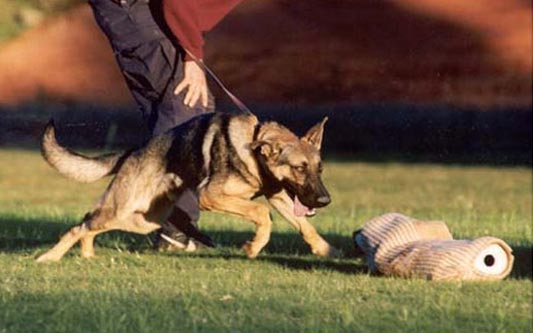
Dominance will show in the dog's temperament once it matures (either 15 to 36 months, most commonly at 18 months) . I have a very good 19-hour lecture course on Dealing with Dominant and Aggressive Dogs. You will see growling around the food bowl and growling when you try and take his toys away. These are signs of dominance. However, when a working bloodline puppy bites your pant leg or hands when you are roughhousing with it, this is not a sign of dominance. These are signs of prey drive. Prey drive and dominance are also two different things.
If you need to learn more about prey drive, see my article Understanding the Drives of Protection Training or get the following DVDs:
To learn to control a dominance problem in a dog, we need to understand its pack instinct. Dogs are pack animals by nature. They accept and live by pack rules. In nature, a pack has a designated pecking order from the pack leader to the lowest member of the pack. When we train protection dogs, the handler is ALWAYS the Pack Leader. This is very important. An adult dominant dog is always one step away from challenging the handler for the leader position. He is always a dog that is more difficult to train in obedience because he questions the pack leader's authority and does not easily follow commands.
Dominance in our dogs is unacceptable in any form. It must be stopped as soon as possible. The earlier you can establish pack structure, the easier it is to manage dominance in dogs. For puppies, you need to put them through our groundwork program targeted specifically for puppies.
Adult dogs will need to go through a slightly different groundwork program which is undoubtedly more work than a puppy. You will need to establish pack structure and as well as go through the guide I wrote for dominant and aggressive dogs.
A dominant dog instinctively will stand over a less dominant pack member. This is something parents with small children need to be aware of. We have an article on how to manage your dogs around children.
While on the topic of dogs and kids, I need to bring up the matter of prey drive and kids. To learn more about prey drive, read my article on drives. A dog's prey drive is the drive to chase and kill prey. The thing that triggers prey drive is quick movement of small objects. Kids can trigger a dog's prey drive by running away from the dog while they are screaming and squealing and making a lot of noise. This action on the part of the kids can trigger the dogs to chase and bite. This action has nothing to do with dominance in the dog. Small children should be monitored very closely around all dogs. It does not matter what breed.
My experience with dominance is most common in adult dogs that have grown up in another home and were never shown proper pack structure as a puppy. When a dog doesn't have a pack leader, they will step up and take on the task itself. This can lead to a lot of problems. The new owner must establish pack structure and rules for the dog.
If that dog challenges the handler when he tries to make him lay down or tries to give him a bath, the dog is saying that he doesn't want to do this. If the handler is inexperienced, I must say that backing down is the right decision, unless he wants to push the issue and take the risk of being bit.
If you rescue an adult dog and it has dominant tendencies, the wisest thing to do is not ask it or command it to do something that it will contest or not want to do. For example, don't make an issue of the food bowl. Put the food down and don't go near it when he is there. Don't try and take a ball out of his mouth, trick him into dropping it for a piece of food or another ball. Don't try and force it to lie down (many times dominant dogs don't like being forced in to down). If you want him to down, have him do it and give him a piece of food. Don't get in the dog's face and challenge him with direct eye contact unless you want to start a fight. I kind of compare this to being around your wife (or husband) when they are in a bad mood. I know what I can do to get along, so I make a point of not doing the things that start arguments.
I think it is important to everyone reading this article to know that true dominance in adults is not a common problem. It does not happen very often. If it did, dogs would not be as popular as they are. If you are at all concerned, the best solution for most families that have no experience with protection dogs is to start with a puppy. When a dog grows up in the family, they learn their place in the pack order (at the bottom) without ever having a dominance problem. 99.9% of the pups that go out of our kennel never have this problem, but if common sense is used in the times when it does happen, the problem can be easily corrected. I always tell people, "The best judge of good temperament is a dog's ability to get along with kids." My 10-year-old son can go to any dog in my kennel and to me, this is good temperament.
I shake my head when I hear people say, "I want a big ALPHA dog for my protection dog or my police dog." When I hear this, I know that these people do not understand dogs, temperament, or training. The alpha dog is stubborn and difficult to train. They do what they want to do, not what you want them to do. They should not be police service dogs or personal protection dogs because they are too difficult to control. My police dog is one of the toughest dogs I have ever owned in my life and he does not have a dominant bone in his body. This is the type of dog people should want for a service dog or a family protection dog.
If you really want to learn about this type of work, I recommend that you look at the video I did titled The First Steps of Bite Work. It goes into a great deal of detail on teaching young dog's bite development in a step-by-step program that is designed for everyone to understand. If you did not understand bite development before you watch this video, you will when you are done watching it.




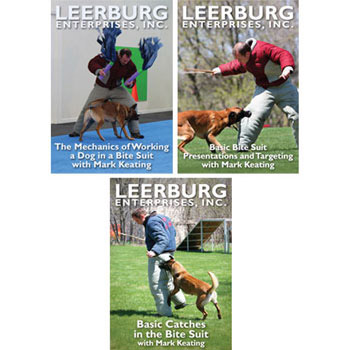
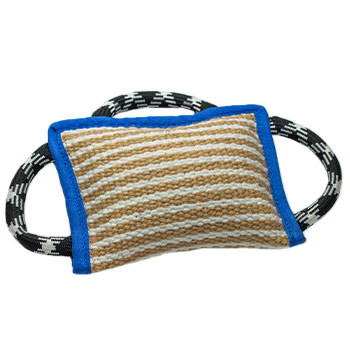
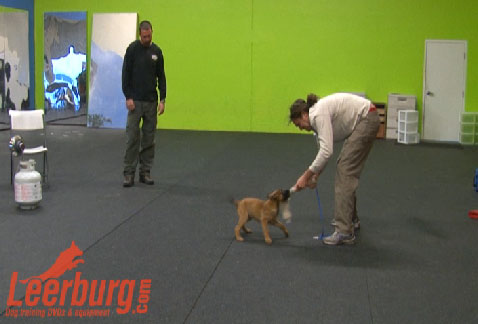


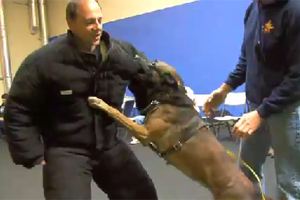
Ask Cindy.